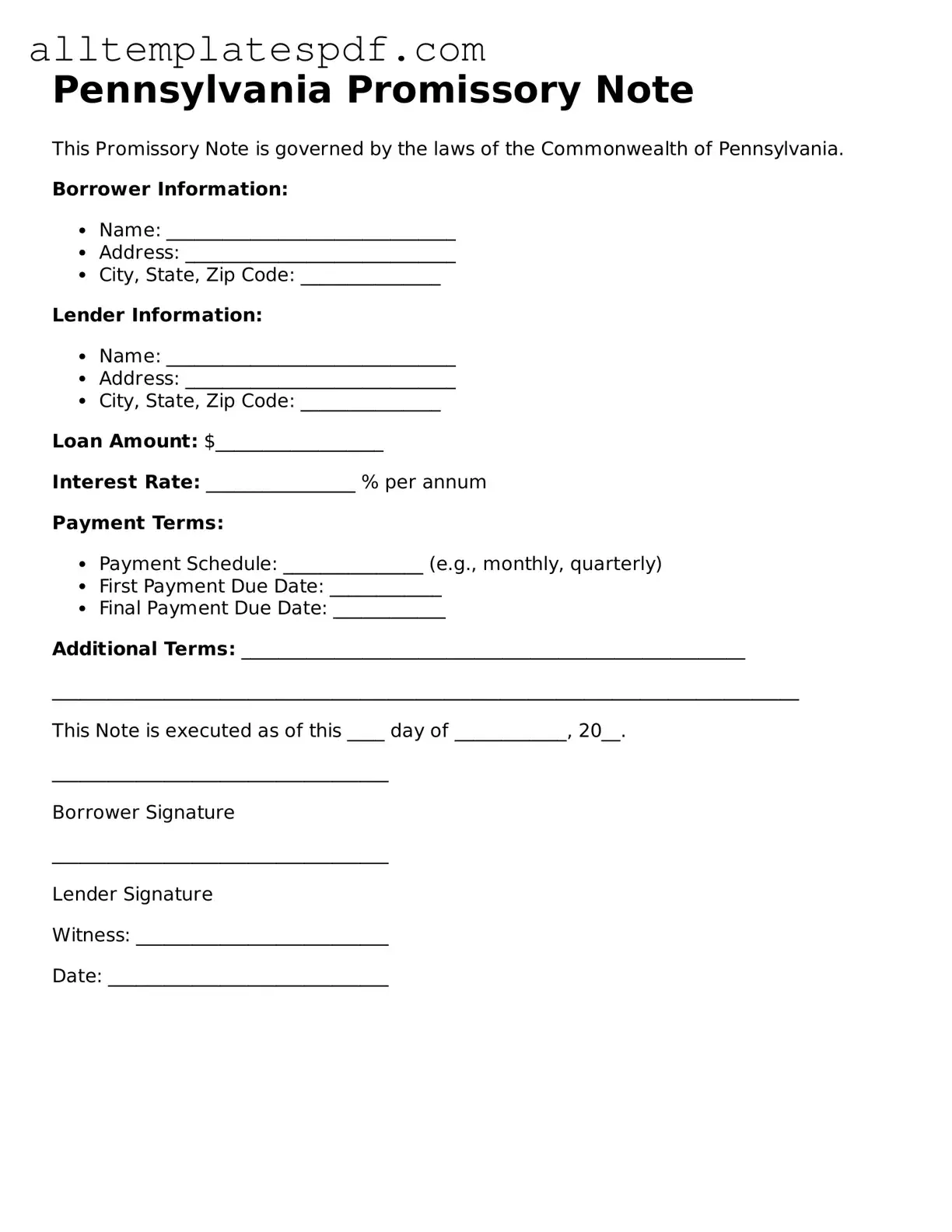Filling out a Pennsylvania Promissory Note form can seem straightforward, but many people make critical mistakes that can lead to complications down the line. One common error is failing to include the full names and addresses of both the borrower and the lender. This information is essential for clarity and legal purposes. Without accurate identification, enforcing the note may become difficult.
Another frequent mistake is not specifying the loan amount clearly. While it may seem obvious, writing the amount in both numerical and written form is crucial. This practice helps avoid misunderstandings regarding the actual amount owed. If there is a discrepancy between the two, it could lead to disputes later.
People often overlook the importance of detailing the interest rate. Leaving this section blank or using vague terms can create confusion. Clearly stating whether the loan is interest-free or specifying the exact interest rate ensures that both parties understand their obligations. This clarity can prevent future disagreements.
Many individuals neglect to outline the repayment terms. It is vital to specify when payments are due, how they should be made, and the total duration of the loan. A lack of clear repayment terms can lead to missed payments and potential legal issues. Both parties should know when and how payments will be made.
Another mistake is failing to include a late fee clause. Without this clause, the lender may have no recourse if the borrower fails to make timely payments. Including a late fee can serve as an incentive for the borrower to pay on time and provides a clear consequence for late payments.
Some people forget to sign and date the document. A Promissory Note without signatures is not legally binding. Both the borrower and the lender must sign and date the form to make it enforceable. This step is crucial in confirming that both parties agree to the terms outlined in the note.
Lastly, individuals often do not keep copies of the signed Promissory Note. It is essential for both parties to retain a copy for their records. This documentation serves as proof of the agreement and can be critical if disputes arise. Keeping a copy ensures that both parties have access to the terms agreed upon.
